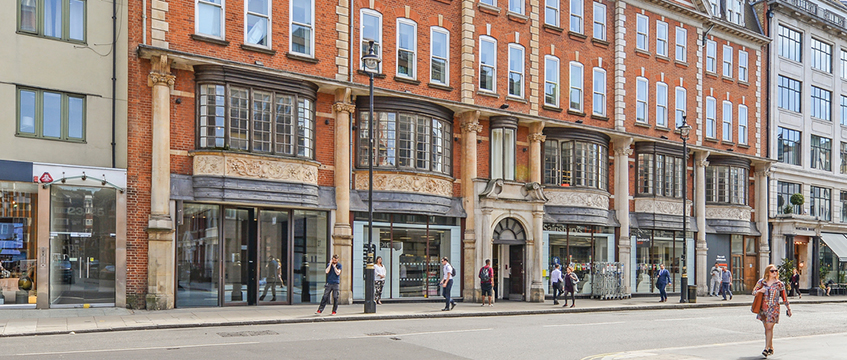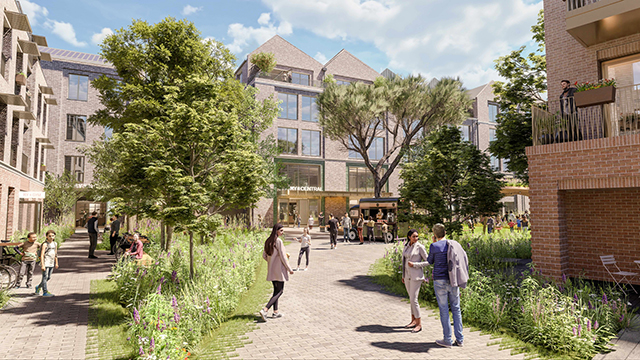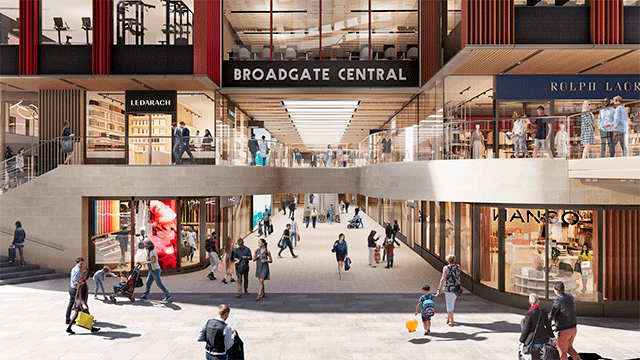Manchester has spent 200 years arguing it is not just the equal of, but in every way superior to, that self-important traffic jam called London. So its lack of Michelin stars is puzzling.
Good food makes for a good city, and it is an issue of pride, especially when Manchester’s traditional sparring partner, Birmingham, boasts no less than four one-star establishments.
It also matters for landlords and developers. Attracting a successful upscale restaurant sets a tone that feeds through into higher rents and higher yields.
Yet, the last Michelin star in Manchester burnt out in 2010 when Juniper, a fancy eaterie in a wealthy suburb, lost its chef. Earlier this year, a BBC TV series called Restaurant Wars dramatised the efforts of two chefs – Simon Rogan and Aiden Byrne – to create Michelin starred venues in the city. Neither Rogan’s The French at the Midland Hotel nor Byrne’s Manchester House, Spinningfields, has yet to secure the coveted prize.
Meanwhile, indigenous Northern foodies have had mixed fortunes. Raymond Blanc protégé Paul Heathcote’s signature restaurant drizzled its last jus at Deansgate in 2009.
London restaurateurs have tried to fill the gap with regional outposts of fine-dining or premium-casual formats. Their efforts have usually failed. Le Petit Blanc closed in 2010, and an expensively fitted-out Chez Gerard at King Street opened in 2000, its first outside London, only to shut years before the chain hit the rocks in 2011.
Once bitten, twice shy. The revamped and refocused Brasserie Blanc is opening new restaurants across the UK (including, insultingly, in Leeds). However, a spokeswoman said: “There are currently no plans to reopen in Manchester as they are currently focusing on other sites and particularly on their line of White Brasserie Pubs, mostly in the South East.”
The Manchester premium-casual scene is dominated by local operators. San Carlo Group has a stable of popular local brands, while Individual Restaurants practically invented the business-suits-meet-WAGS lunch venue, which has dominated the market for 15 years. Its Restaurant Bar & Grill is still the best place to get papped.
Developer Argent went for the local option when letting the restaurant space at its 268,000 sq ft One St Peter’s Square. Fumo, a San Carlo brand, is to take 5,500 sq ft for an upmarket venue, which will open from breakfast through to late-night meals. It is due to open this month.
Argent’s James Heather explains the decision to go local. “We could probably have got more money if we’d gone with someone else,” he says, “but frankly the restaurant is a small part of the value of the building, and if we’d gone to some operators – mentioning no names – they would have been wrong and had a massively detrimental effect on yields.”
He adds: “A London operator could work, if it understood what Manchester needs. And we did have options in London – and a huge number of local options – and we wanted to make a choice that would enhance the office offer upstairs, which is where the value of the building comes from. An all-day offer, starting with breakfast, is what we wanted.”
At Deansgate, London steak house Hawksmoor is opening its first restaurant outside the M25. The 7,000 sq ft unit is at Henry Boot’s redeveloped Courthouse.
Camilla Topham, partner at letting agent Shelley Sandzer, says: “We didn’t expect the larger unit to be popular, but it was. London operators like larger premises in the city because they know that, unlike London, the week runs from Thursday to Sunday, so you want as many covers as possible on those big nights. They also need space for a big bar, which is important in Manchester.”
Topham adds: “Four years ago nobody wanted to open in Manchester, but today London operators struggle to find and afford more London sites. They are looking for growth in the regional cities.”
Hawksmoor is likely to be followed by others: Burger & Lobster is taking around 9,000 sq ft at Ship Canal House, King Street, a ciabatta’s throw from Jamie’s Italian, where the bar has become a must-be-seen-at venue.
“It’s not true that Mancunians aren’t interested in food – but there is a strong independent restaurant scene and any incomer with a mediocre offering is going to fail,” says Topham.
Above all, she warns, aspiring new entrants should remember that Manchester is small compared with London. “You can run a terrible restaurant in Soho, and it will make money because hordes of people are always passing through. But that won’t work in Manchester because the scene depends on repeat business,” she says.
Mancunians love their food. But they do not like being told how to hold their knife and fork, and they do not like tiny portions served by reluctant or fussy staff. New arrivals from London: beware.
Pop ups
Manchester’s liveliest gourmet scene is more about paper plates than starched linen napkins.
Pop-up restaurants – old news in London, but still very new to the North West city – and a series of rave-meets-banquet events organised by B.Eat Manchester, are rapidly changing the city’s food culture.
Jim Morgan moved himself and his wood-fired oven from Peckham to pioneer pop-up dining in Manchester. He and his Rudy’s Pizza crew are now looking for a 1,500 sq ft permanent venue and he is in talks for an outlet in the trendy inner-urban residential district of Ancoats.
“The pop-up concept works really well, but we’d like a fixed address. We’re really excited about Ancoats,” he says.
A second party operator, Guerilla Eats, is also creating good foodie waves.











